When public swimming pools were first introduced in the modern era, concrete was the go-to material in their construction, and over a hundred years later, it’s still frequently used.
But recently, vinyl liner pools and fiberglass pools are offering an increasingly competitive option to the traditional concrete structure.
So what are the pros and cons of a concrete pool? And is it even worth going with this option anymore?
Note: If you’re curious how this type of pool stacks up against alternatives, check out our full comparison of fiberglass, concrete and vinyl pools.
What Is A Concrete Pool?
Concrete inground pools use a mixture of water, cement, sand, and coarse aggregate (usually stone or gravel) to create a pool shell.
This is done by using a sprayer hose rather than the traditional method of pouring concrete. The shell then has a finish applied to it – either plaster, aggregate, or tile. This makes it more comfortable to walk on, helps it withstand water and chemicals, and also creates a visually pleasing pool.
Some concrete pools are finished simply by applying a coating of epoxy paint. However, we don’t recommend it as it leaves the walls and floor rough to the touch and will eventually need to be repainted at some point down the line.
Shotcrete vs Gunite
You may see concrete pools referred to as either gunite or shotcrete. So what’s the difference?
With gunite, the dry materials are mixed and placed in a hopper. Compressed air then forces it down the line, and it mixes with water before being forced out of the hose. The speed of it creates compression, which makes the mixture stick to the walls and floor of the swimming pool.
Shotcrete, on the other hand, is more in line with what we think of when it comes to concrete. The dry materials and water are premixed in a hopper, and that mixture is shot out of the sprayer at a high velocity, making it stick to the walls and floor of the pool.
Are Concrete Pools Worth It?
To help decide if concrete is for you, you should learn the ins and out of these pools.
What Shapes/Sizes Do They Allow For?
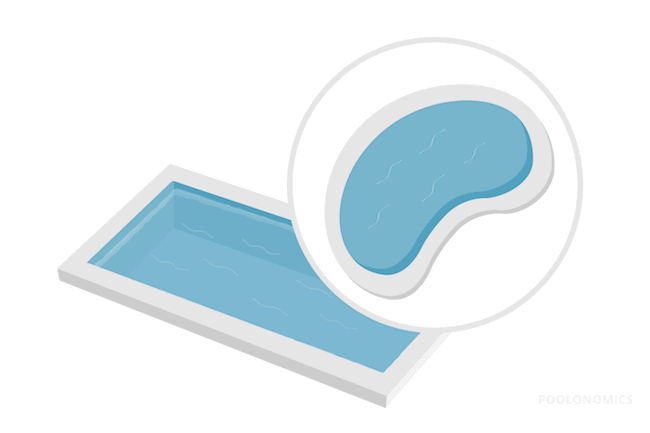
Answer: Any shape, any size.
One of the most attractive things about concrete pools is that you can customize virtually every single aspect of the pool. This means you have no restrictions when it comes to the shape and size of the pool.
Vinyl liner pools can be limited in choice, and fiberglass pools only allow for specific shapes and have a size restriction as well.
Regardless, most pools use one of these four shapes:
- Rectangular
- Roman (rectangular with arched ends)
- Kidney
- Freeform (lagoon style)
If you want total control over the look, depth, and size of your swimming pool, concrete will allow that.
What Colors/Finishes Do They Allow For?
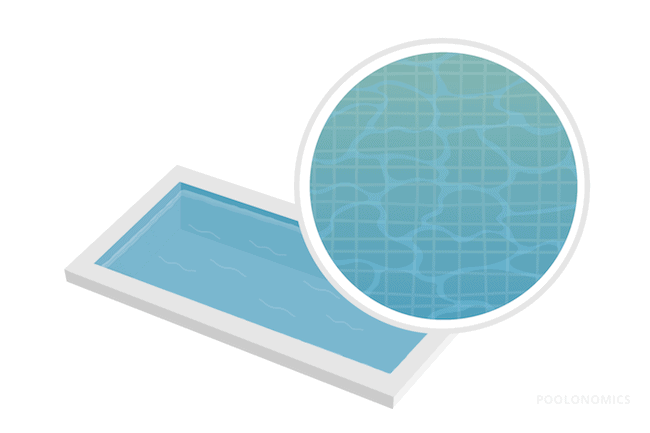
Answer: Multiple colors in plaster, aggregate, or tile finishes.
Sticking with the theme of customization, concrete pools allow you to choose what finish you want to put on the shell.
The oldest surfacing material for pools is plaster, which is a mixture of cement and crushed marble. It’s trowled by hand to create a smooth (albeit slightly bumpy) finish. While it’s a classic look and budget-friendly, it’s the least durable finish, needing resurfacing around the 10 year mark.
Aggregate is the mid-range finish which uses a blend of cement-based, pigmented plaster with naturally-occurring products like pebbles, stones, and crystals.
These infusions can be polished smooth, or be exposed to give the finish texture and anti-slip properties which are surprisingly comfortable to walk on. The non-porous nature of aggregate helps the finish resist things like stains and algae growth.
Tiles are the luxurious finish option and can be crafted from ceramic, porcelain, stone, or glass. They’re easy to keep clean and can virtually last forever, but they are also very expensive compared to plaster and aggregate.
Some pools will use a combination of finishes, installing tiles only at the water line to give it an upscale accent while keeping the overall cost of the pool down.
Additionally, you should choose the right color for the finish, as it has a direct impact on the color of the pool water. Light colors like white or light blue give you a tropical vibe, and darker colors give you more of a natural, lagoon type feel.
What Other Customizations Do They Allow For?
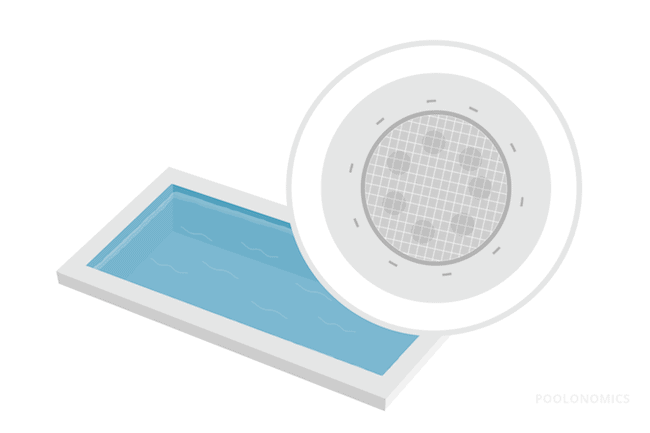
Answer: Anything and everything.
Want to add a tanning ledge? Or how about a sheer descent or grotto?
Go nuts! The customization concrete pools afford you means you’re limited only by your imagination.
Lighting is an important option you should consider if you plan on using the pool at night. In addition to placing lights in the walls of the pool shell, you can design them on the exterior of the pool for further illumination and ambience. Timers can also be added and light shows programmed for a truly unique nighttime experience.
The addition of pool water features is very popular with concrete pools. Concrete pool owners usually have large budgets, and therefore have no problem spending a little bit extra to add some visual flair to the space. Things like deck jets, waterfalls, bubblers on a tanning ledge, scuppers, statues, water walls, and misters can all add some drama to your pool.
Finally, you can also design the pool deck and coping any way you wish. Choose from an array of materials, add lights if you wish, and make it any color you’d like. This can provide the pool with color contrasting or blending to give the entire structure for a uniform look.
How Do They Feel To The Touch?
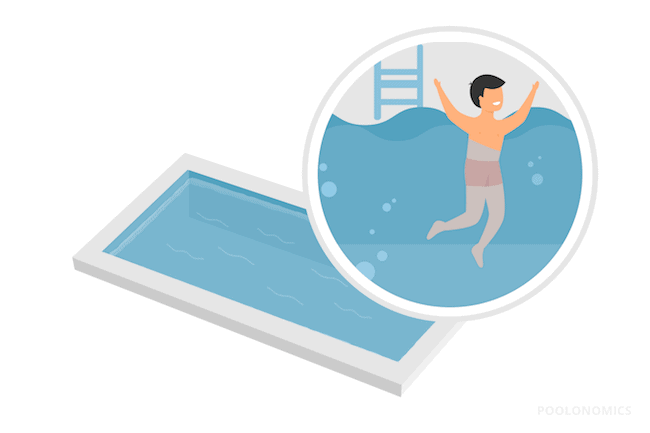
Answer: Depends on the finish you put on them.
If you are strictly painting a concrete shell, it’s going to feel pretty rough under foot, and in some instances can actually hurt and cause cuts.
Plaster finishes will be smooth but bumpy, aggregate can be smooth or grippy, and tile will be relatively smooth under foot.
How Do They Impact Water Chemistry?
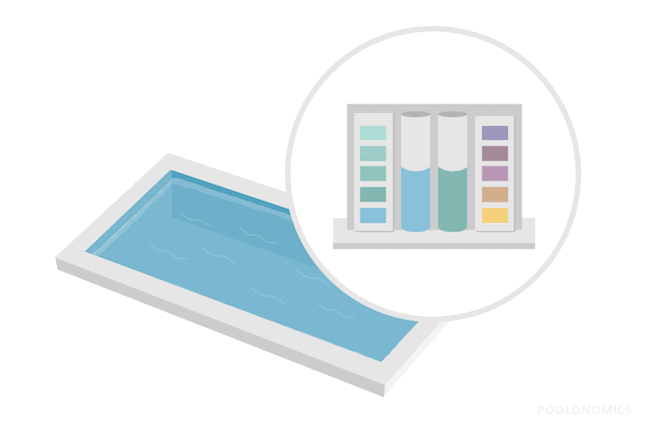
Answer: Concrete can affect pool water’s pH balance.
Concrete is alkaline-based, and can slowly throw the water chemistry out of balance into alkaline territory. For this reason you’ll need to stay on top of testing the water at least once a week so it doesn’t begin to harm the structure.
A high-alkaline pool will introduce high calcium levels into the water, causing scaling, cloudy water, and can even clog your filter. Swimmers will also experience burning eyes and itchy skin unless you lower it back to a balanced state.
How Easy Are They To Maintain?
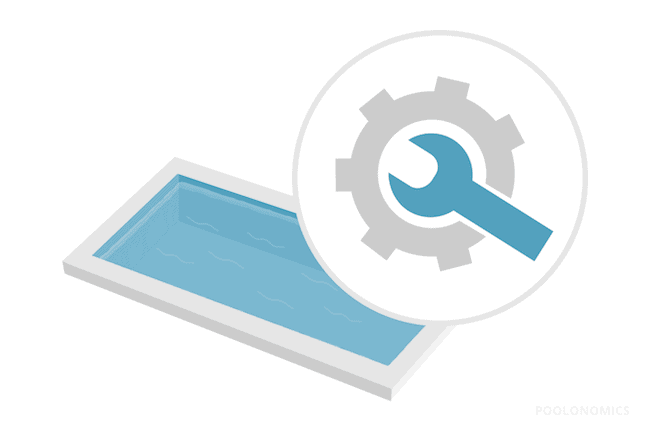
Answer: Maintenance needs to be a top priority.
The porous nature of concrete means it’s more susceptible to algae blooms accumulating and spreading throughout the surface of the pool. Using an algaecide will help control this.
As part of your regular pool maintenance, the pool walls and floor need to be cleaned a minimum of once per week using a steel brush, and coupled with a pool vacuum to keep things in tip-top shape.
If you’re looking to have a saltwater pool, you’ll need to monitor calcium hardness, as well as be ready to resurface it faster than if you had a traditional chlorine pool. This is because salt likes to eat away at concrete, resulting in faster wear and tear.
Around every 5 years or so, you’ll also have to acid wash the pool as the walls and floor will become stained due to chemical and sunlight exposure. Additionally, the finish will break down over time and require a full resurfacing.
Also worth mentioning is how concrete is susceptible to cracks. This is usually the result of erosion or shifting soil over time. Not only can it be difficult to repair cracks, but you also risk the dreaded “pool pop” if you have to have to drain the pool to repair the concrete.
How Long Do They Usually Last?
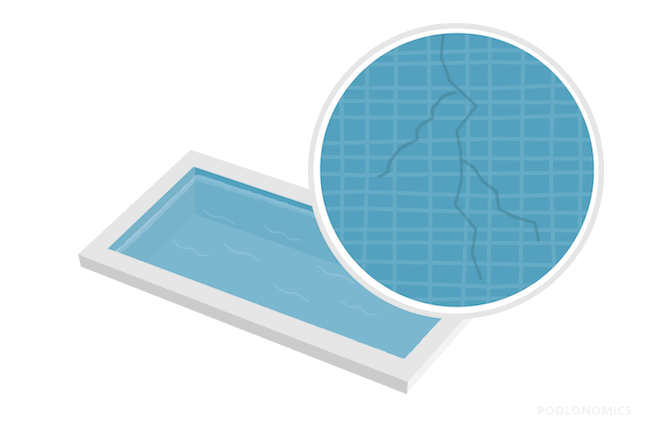
Answer: 50+ Years
Concrete has a very long lifespan, and its longevity is one of the reasons people choose it over vinyl-lined pools or fiberglass. You can get multiple decades of use from a concrete swimming pool, and it’s not unheard of for it to last over 50 years.
It is important to note that the finish you put on the pool will have to be resurfaced at some point over the years.
Paint, plaster, and aggregate will all eventually break down and at times may even need repairing. Tiles, on the other hand, can last forever if they’re kept clean. While they’re an expensive upfront option, they’ll actually save you money in the long run.
Of course, keeping your pool water chemistry balanced at all times will extend the life of any finish, protecting it from the harsh environment of acidic or alkaline water.
How Easy Are They To Install?
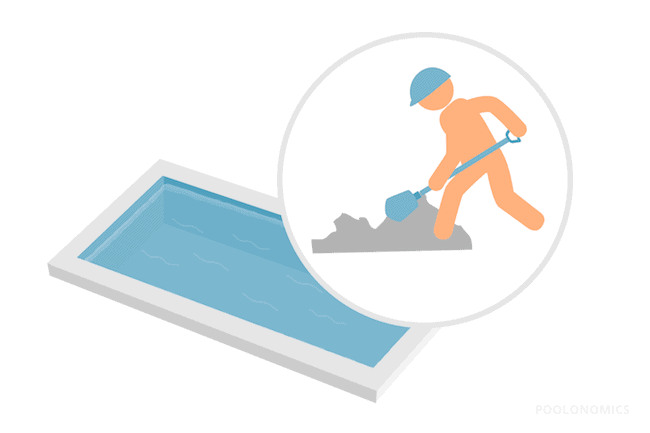
Answer: Long build process and labor intensive.
Out of all swimming pool styles, concrete is the most laborious.
On average, it will take anywhere from 3 to 6 months to fully install, depending on a number of factors.
This includes the size of the pool, the difficulty of excavating the land, the amount of customization in the design (pool lights, water features, etc.), and how much work is required to create the deck and landscaping around the pool.
How Much Do They Cost?
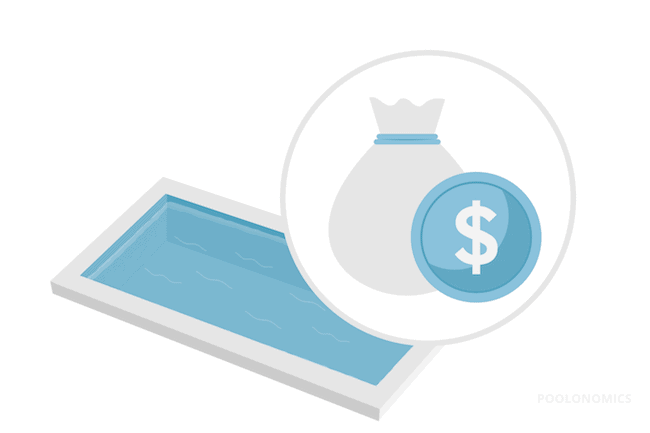
Answer: On average, $75,000.
Concrete pools are the most expensive pools to build and maintain.
On average, you can expect to pay around $75,000 for just the pool, with landscaping costs potentially bringing the price up to $100,000.
Like anything, though, this is dependent on how much labor is involved and what options you go with. The pool shape and size, what kind of finish you put on the walls and floor, the addition of water features and lights, the type of deck and coping, and landscaping around the pool all play a role in the final price.
General maintenance costs for concrete pools are also more expensive than vinyl liner or fiberglass pools, costing upwards of $20,000 over the lifetime of the pool. Additionally, a plaster finish will need to be acid washed every 5 years, with resurfacing of paint, plaster or aggregate needing to be done every 10 years.
DIY concrete pool kits are also an option if you prefer to (literally) do it yourself and save some money in the process, though they aren’t all that popular. The cost of these kits are between $3,000 and $5,000.
Concrete: Is It Worth It?
Concrete pools are worth it if you are looking for an inground pool that is highly customizable and will basically last your entire lifetime as long as it’s properly taken care of.
However, they do have their drawbacks, being expensive and requiring a great deal of maintenance. But if these things don’t bother you, you can pretty much design your dream pool by going with concrete.
